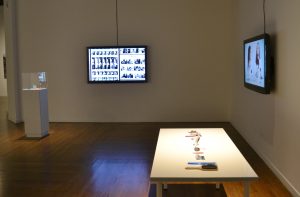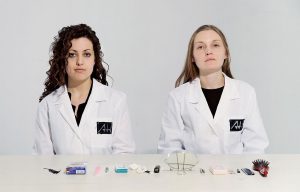Heather Dewey-Hagborg is a self described “transdisciplinary artist and educator”: basically, she’s doing a lot. I was drawn to her because she is interested in using art as research, something I really don’t hear that much about since most of the time people separate these two worlds. She is most well known for “biopolitical art”, where she will use biological research to inform her practice or activist art. Dewey-Haborg is well-known for controversial projects where she uses found human DNA and her own algorithms to create sculptures and figures.
One project of hers that stood out to me is called “DNA Spoofing”. I picked it because I don’t think I’ve seen many people make jokes out of human DNA before, so this was intriguing. She takes a “playful” approach to genetic surveillance by discussing the different ways that humans shed their genetic material in public, and the ways in which is could possibly be harvested and used. She created an entire exhibit (which was shown in a lot of museums across the US and Europe) that includes a video example of how human’s shed DNA, as well as a display of the daily common objects that facilitate this.
I love this work because it sits at the intersection between science and art, particularly biology, which I’ve always been interested in. I also like how she is identifying the ways in which we accidentally volunteer our own genetic information to strangers, something I’ve never really thought about before and makes me a little uncomfortable (I think good art should do that). From a technology standpoint, this project is interesting because it’s talking about something she herself does as an artist/researcher.


![[OLD FALL 2018] 15-104 • Introduction to Computing for Creative Practice](https://courses.ideate.cmu.edu/15-104/f2018/wp-content/uploads/2020/08/stop-banner.png)